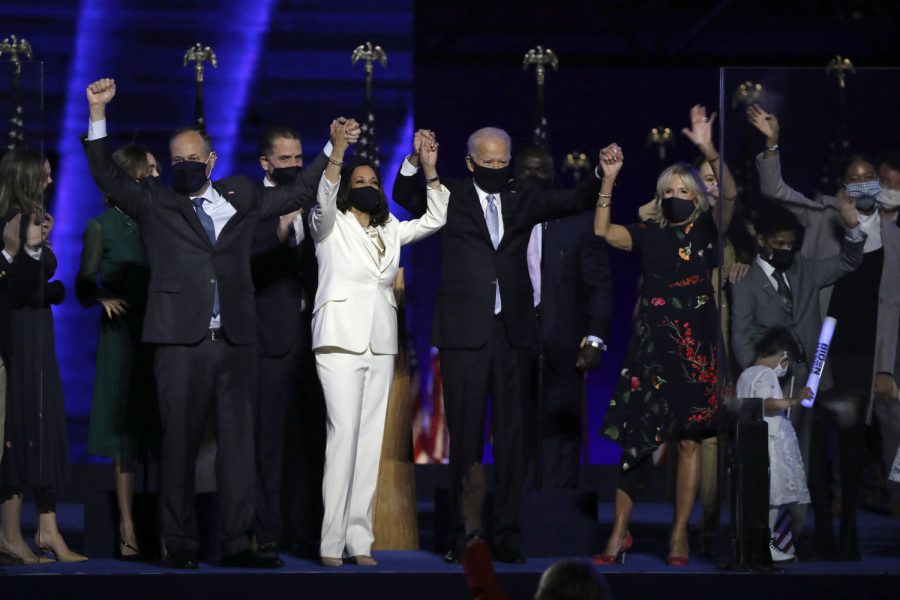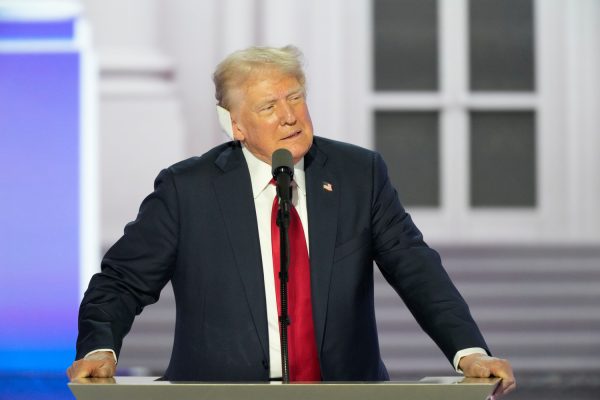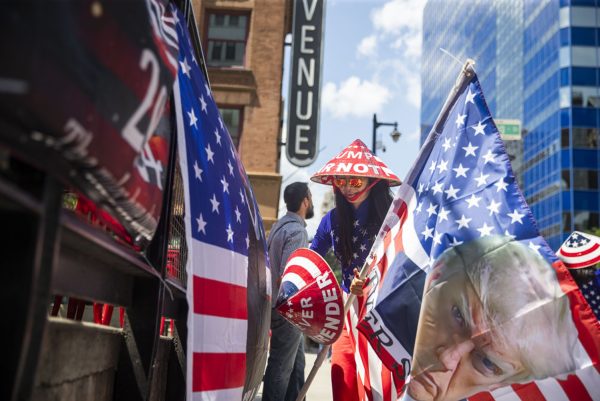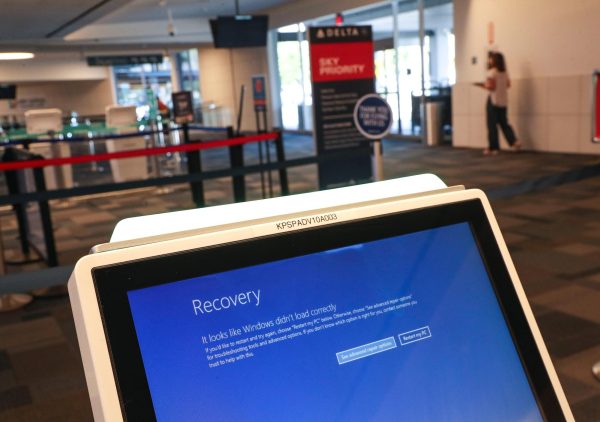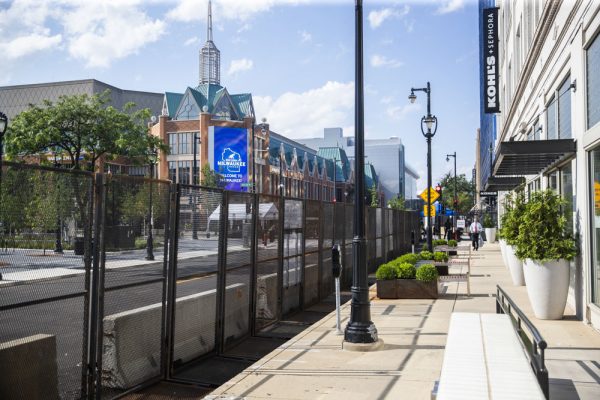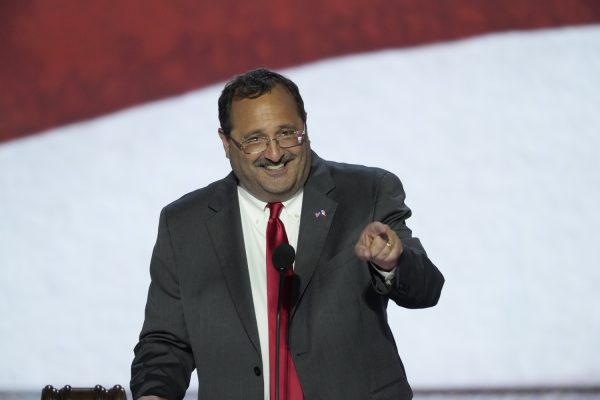Third time’s the charm: Joe Biden’s long road to the White House
Joe Biden’s path to White House began in Iowa in 1987. The Daily Iowan documented the president-elect’s three presidential campaigns.
Vice-President-elect Kamala Harris and President-elect Joe Biden celebrate with supporters after declaring victory in the presidential election at the Chase Center in Wilmington, Delaware, on Saturday, Nov. 7, 2020.
Joseph R. Biden Jr.’s long and grueling path to the highest office in the land wrapped up Nov. 7, becoming president-elect of the U.S. It began more than three decades ago, right here in Iowa.
Presidential ambitions have dominated Biden’s long career, and his 2020 campaign is his third run for the office.
“Like many senators, even as a relatively young senator, he woke up in the morning and looked in the mirror and saw a president,” said University of Delaware political-science Professor David Redlawsk, who has studied the Iowa caucuses.
Biden’s first bid for the Oval Office came during the 1988 presidential election. On June 9, 1987, after touring Iowa multiple times, he announced his candidacy to more than 500 people at the Savery Hotel in Des Moines, according to a June 10, 1987 Daily Iowan article.
Biden’s first run was derailed by a plagiarism scandal after he lifted parts of a speech, without attribution, from British Labour leader Niel Kinnock during a debate at the Iowa State Fair. Later revelations of plagiarism while in law school and exaggeration of his academic record ultimately sunk his campaign before the caucuses, but he vowed to seek the office again.
Two decades later, Biden found that opportunity at the close of George W. Bush’s presidency, and threw his hat in the ring again. He campaigned as a pragmatic candidate with foreign-policy experience, proposing a diplomatic solution to the war in Iraq.
“As your president, if I ended the war immediately, does anybody think things would be secure in Iraq or the Middle East?” Biden said in Cedar Rapids, according to a May 7, 2007 DI article. “The question is not if we leave, which is only a matter of time, but how we leave.”
Running against two historic candidates – then-Senators Barack Obama and Hillary Clinton – Biden failed to gain much traction in the 2008 Iowa caucuses. At the 2007 Tom Harkin Steak Fry in Indianola, Biden signs “fought for air” among a sea of Obama and Clinton signs, according to a Sept. 17, 2007 DI article.
Timeline by Kelsey Harrell/The Daily Iowan
“Part of the problem Biden had in the 2008 cycle was simply that there wasn’t really any room for another candidate,” Redlawsk said. “He wasn’t one of the top three the media focused on.”
Biden finished fifth in the 2008 caucuses, garnering less than 1 percent of support, and he suspended his campaign that night. Later that year, Biden got his invitation to the White House – though not in the way he had hoped – when Obama chose Biden as his running mate.
Iowa 2020
Biden’s first stop in Iowa during the 2020 campaign cycle was in October 2018 to campaign with U.S. Rep. Abby Finkenauer in Cedar Rapids before the midterm elections. Finkenauer, a Democrat, who worked on Biden’s Iowa campaign in 2007, was challenging a sitting Republican.
Biden had not yet announced his candidacy, but it was rumored he was going to run to take on President Trump.
“It’s our leaders who need to set the tone and dial down the temperature,” Biden said on Oct. 30, 2018.
In the weeks leading up to the Iowa visit, there was a shooting at a Jewish synagogue in Pittsburgh that killed 11 people. Additionally, prominent Trump critics, including Barack Obama, had received bombs in the mail. Biden took hold of this and told the Cedar Rapids crowd to vote for candidates with moral character.
Biden’s pitch that this election was “a battle for the soul of the nation” was born after Trump responded to neo-Nazi rioting in Charlottesville, Virginia, saying there was “very fine people” on both sides.
While Biden didn’t declare his candidacy until April 2019, he said multiple times throughout his campaign that he knew he needed to run for president after seeing Trump’s reaction to the August 2017 Charlottesville rally.
Amid a crowded field of Democratic hopefuls, Biden had trouble staking a spot on the stage in Iowa. While consistently leading national primary polls, he lagged behind Sen. Bernie Sanders, I-Vt., Sen. Elizabeth Warren, D-Mass., and former South Bend, Indiana Mayor Pete Buttigieg in Iowa polling as the caucuses drew closer.
In the Feb. 3 caucuses, he had a disappointing fourth-place finish, taking 15.8 percent of state delegate equivalents. At the time, Biden had called the caucuses a “gut punch.” Biden’s campaign didn’t fully take off until Super Tuesday, which ultimately led to his nomination.
Sanders, Buttigieg, and Warren had a big ground game in Iowa with some of the most volunteers and grassroots organizers. In an interview with the DI, Biden said his ground game wasn’t as large because he jumped into the race later than the other candidates.
“Bernie has been out there a long, long time running, and he’s, to his credit, built up a base,” Biden said to the DI on Feb. 1. “Elizabeth has as well.”
While Biden won the support of the nation, he lost Iowa on Nov. 3 in the general election. Trump won the state for a second time with 53 percent of the vote, compared to Biden’s 44 percent.
America’s first woman VP
With Biden’s election, Kamala Harris has become the first woman of color to be elected vice president.
Harris is African American and South Asian American. She was also the first woman of color elected to be California’s attorney general and to represent California in the U.S. Senate.
The California senator’s first visit to Iowa as she geared up for a presidential campaign was in October 2018, according to Politico. She invested heavily in campaigning in Iowa, and in summer 2019 she was seen as a major contender in the race, sometimes placing second to Biden in caucus polls.
A key moment in Harris’ campaign was when she attacked Biden during the June 2019 Democratic primary debate for comments Biden made at a campaign event, where he said his work with segregationist lawmakers while in Congress was an example of the kind of civility he would bring to the White House.
Harris pressed Biden on this, and accused him of being against busing. Harris said when she was in school, she was bused from her neighborhood in California as a part of the second class to integrate public schools.
With her slogan “Kamala Harris for the people,” Harris’ stump speech focused on her record as a prosecutor. Similar to Biden’s campaign message, Harris often told rally-goers that “justice is on the ballot” in 2020.
Harris’ support waned through fall 2019 as Buttigieg and Warren made significant gains with potential caucusgoers. She abruptly suspended her campaign on Dec. 3, 2019, citing a lack of funding.
“The process is designed to get us to a nominee. And every time this happens, it is going to be a gut punch and emotional for the supporters, and the staff of the person who makes the hard call,” said former Iowa Democratic Party Chair Sue Dvorsky on Dec. 3 when Harris dropped out.
Dvorsky was a significant Iowa endorsement for Harris, and Dvorsky later threw her support behind Biden and worked in Iowa to get him elected.
Johnson County Supervisor Royceann Porter organized an event at Mercer Park on Sunday to celebrate Biden and Harris’ election. She said Harris becoming vice president is an inspiration for young women.
“It’s a wonderful thing, very wonderful because of the simple fact –– I’m a first, in Johnson County, I’m a first,” Porter said. “I’m the first African American woman to run for a county seat, and I won. So, I know what it is to be a first, and for her to pave this way for us and all the young ladies that can look up to her, it’s a beautiful thing.”
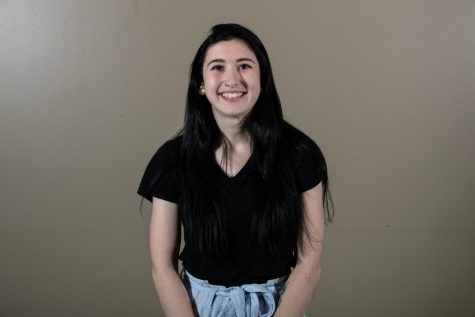
(she/her/hers)
Email: [email protected]
Julia Shanahan is the Politics Editor at The Daily Iowan and a senior at the University of Iowa studying...

(he/him/his)
Caleb McCullough is the Executive Editor at The Daily Iowan. Caleb is a senior studying journalism and political science, with a minor in...



